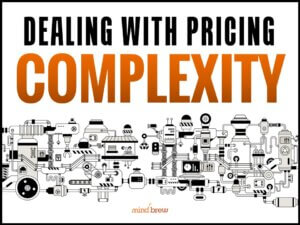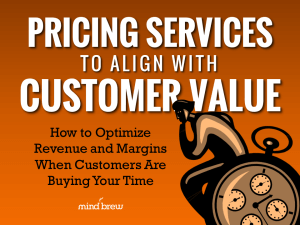Here at PricingBrew, we get a number of questions from subscribers who are struggling to gain traction and generate meaningful results from their pricing analyses. While each question is unique to the situation at-hand, we do tend to see some common threads with respect to the underlying sources of problems and challenges. For example, here are five root-cause problems behind the pricing analysis questions we’ve fielded recently:
- Weak Price Segmentation. When pricing teams are generating a lot of “false signals” and having their findings picked-apart on a regular basis, it’s not uncommon to learn that their price segmentation model is lacking. As pricing analysis is largely a comparative process, there has to be a reasonable expectation of similar willingness-to-pay within your price segments—otherwise, your pricing analyses will always be comparing apples to oranges.
- Focus on Negative Outliers. When pricing teams focus almost exclusively on correcting negative outliers, they can begin to lose internal support as their analyses are increasingly viewed by others as “gotcha” reports, designed catch people making mistakes. And others can also begin to question the value of the entire effort as the financial impact of these corrective actions tends to be relatively small. Pricing teams should balance their approach to also focus on emulating positive outliers, as they are far more valuable and much less contentious.
- No External Benchmarks. It’s very easy for pricing teams to become somewhat insular, looking only at their internal data. This can lead to a self-referencing dynamic where pricing levels are judged according to margin rates, historical prices, and so on. In dynamic markets, this can lead to a loss of competitiveness and conflict with those who are closer to the action. Using external benchmarks such as spot-market indices, raw materials prices, etc., pricing teams can stay on top of market fluctuations and their relative pricing positions.
- Weak Change Management. In many cases, the real problem is not with the pricing analysis itself, but with the pricing team’s inability to follow through on the findings and drive meaningful changes in behavior. In B2B environments, where people and processes are actually wired to resist change, the data and analytical findings are rarely sufficient on their own. And to be most effective, pricing analysts need to become proficient at the “soft skills” of data-driven storytelling, leveraging the principles of influence, and facilitating organizational change.
- No Ability to Predict. When making pricing recommendations, it’s significantly more difficult to secure buy-in and support when you can’t say what will happen to revenue, profits, and unit volumes should your recommendations be adopted and executed. Here again, having an accurate segmentation model based on similarities in expected willingness-to-pay helps a great deal. However, pricing teams should also strive to measure price response (win-rate elasticity) in a more direct fashion to enhance their ability to accurately predict outcomes and impacts.
Of course, all of these root-cause problems are addressable. Granted, they may not be quick or simple fixes, but the solutions are fairly straightforward. The key, however, is to not get so focused on the symptoms that you fail to step back and recognize that there may be something else going on—a underlying issue that, once solved, knocks out a bunch of different symptoms all at once.
To help address the problems highlighted here, be sure to check out the following PricingBrew Journal resources:













